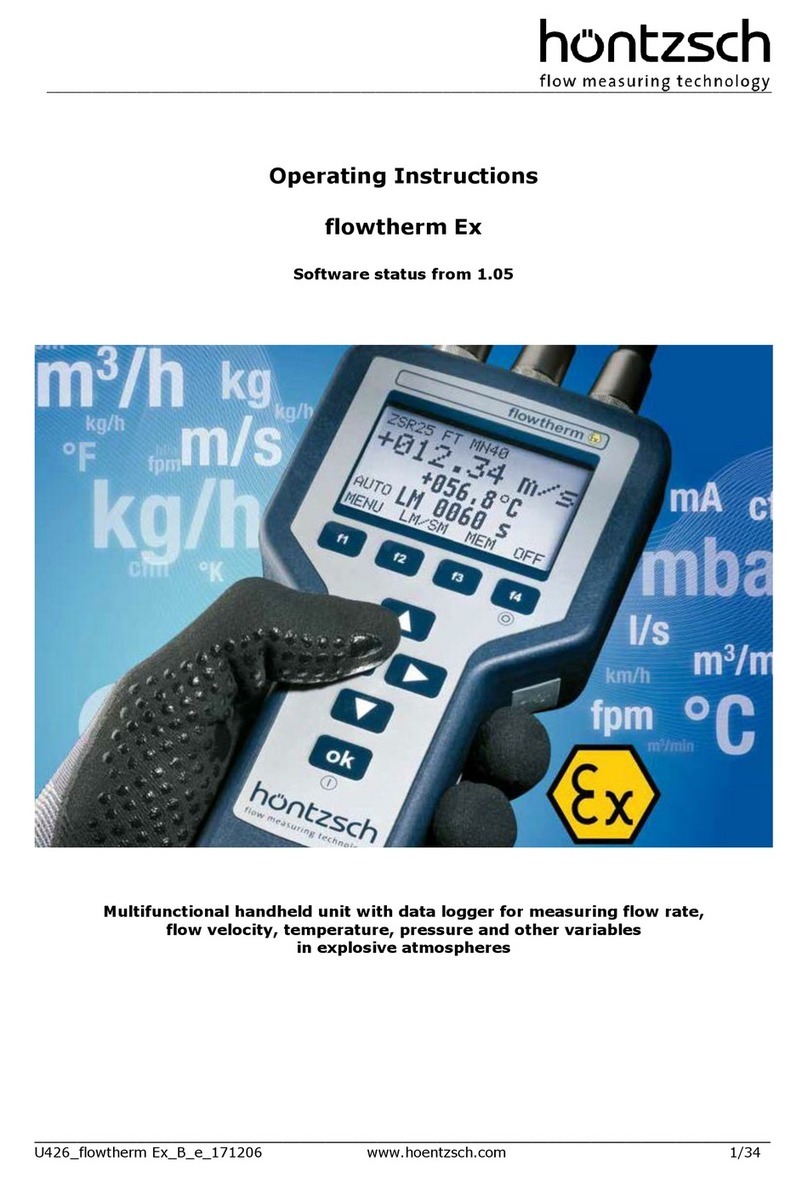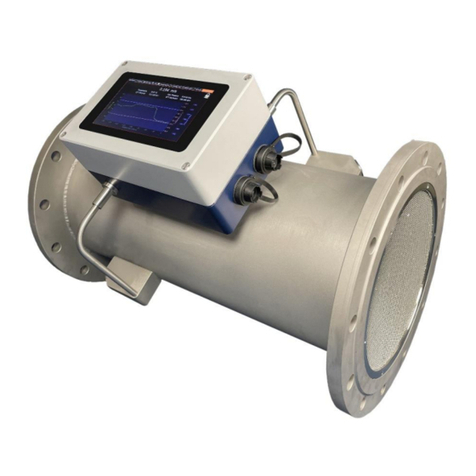
_________________________________________________________________________________________________
U408_flowthermNT_B_e_160420
Contents
1Safety Instructions.....................................................................................................................4
1.1 Specific information...........................................................................................................4
1.2 Handling batteries and accumulators ...................................................................................5
1.3 Precautions for hazardous areas..........................................................................................5
2Scope of Delivery.......................................................................................................................6
2.1 Description, type plate.......................................................................................................6
3Technical Specifications ..............................................................................................................8
3.1 Operating conditions..........................................................................................................8
3.2 Housing and connection .....................................................................................................8
3.3 Electrical data...................................................................................................................8
3.4 Measurement uncertainty...................................................................................................9
4Initial Operation / Startup ...........................................................................................................9
4.1 Connector sockets.............................................................................................................9
4.2 Wiring diagram for the 8-pin connector plug .......................................................................10
4.3 Wiring diagrams for the 12-pin connector plug.................................................................... 11
5Operation ............................................................................................................................... 12
5.1 Key functions..................................................................................................................12
5.2 Setup menu after switch on: ............................................................................................ 14
5.3 Parameter settings ..........................................................................................................16
5.3.1 FA - Basic settings .............................................................................................16
5.3.2 FA - Measurement settings..................................................................................17
5.3.3 FA - Density correction .......................................................................................18
5.3.4 FA –Operating conditions ................................................................................... 19
5.3.5 FA –Standard conditions ....................................................................................19
5.3.6 FA - Pairs of values ............................................................................................ 19
5.3.7 VA - Basic settings ............................................................................................. 20
5.3.8 VA - Measurement settings .................................................................................20
5.3.9 VA –Operating conditions ...................................................................................21
5.3.10 VA –Standard conditions .................................................................................... 21
5.3.11 VA - Pairs of values ............................................................................................22
5.3.12 TA - Basic settings .............................................................................................22
5.3.13 TA - Measurement settings..................................................................................22
5.3.14 TA –Standard conditions .................................................................................... 23
5.3.15 TA - Pairs of values ............................................................................................24
5.3.16 Pt100 - Unit ......................................................................................................24
5.3.17 Analog input......................................................................................................24
5.3.18 Output..............................................................................................................25
5.3.19 Counter ............................................................................................................25
5.3.20 Display ............................................................................................................. 25
5.3.21 Long-term measurement ....................................................................................27
5.3.22 Device .............................................................................................................. 29
5.3.23 Factory settings .................................................................................................29
5.3.24 Data logger ....................................................................................................... 29
5.3.25 Device status..................................................................................................... 30
5.3.26 Device profiles ...................................................................................................31
5.3.27 Key F3 - LM-Start .............................................................................................. 31
5.3.28 Key 4 Switch off / OFF (reset) .............................................................................31
6Troubleshooting.......................................................................................................................32
7Replacement Parts ................................................................................................................... 33
8Instruction Manual Category 3G flowtherm NT ............................................................................. 33
8.1 Equipment .....................................................................................................................33
8.2 Safety Instructions ..........................................................................................................33
8.3 Technical Data ................................................................................................................34
8.4 Installation..................................................................................................................... 34
8.5 Maintenance ...................................................................................................................34
9Declaration of conformity..........................................................................................................35































